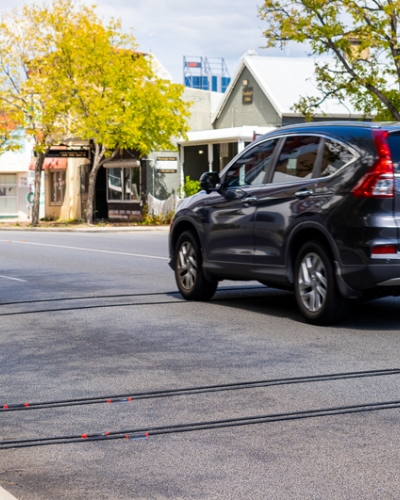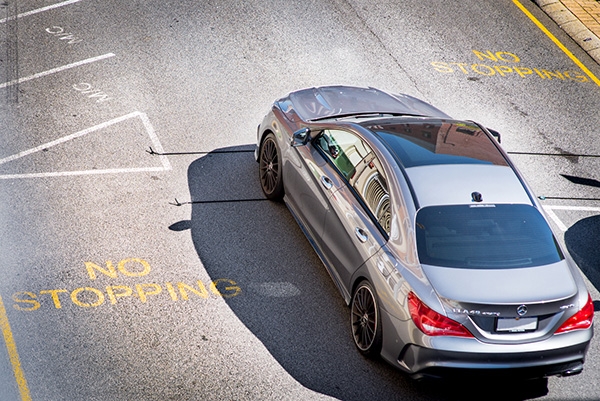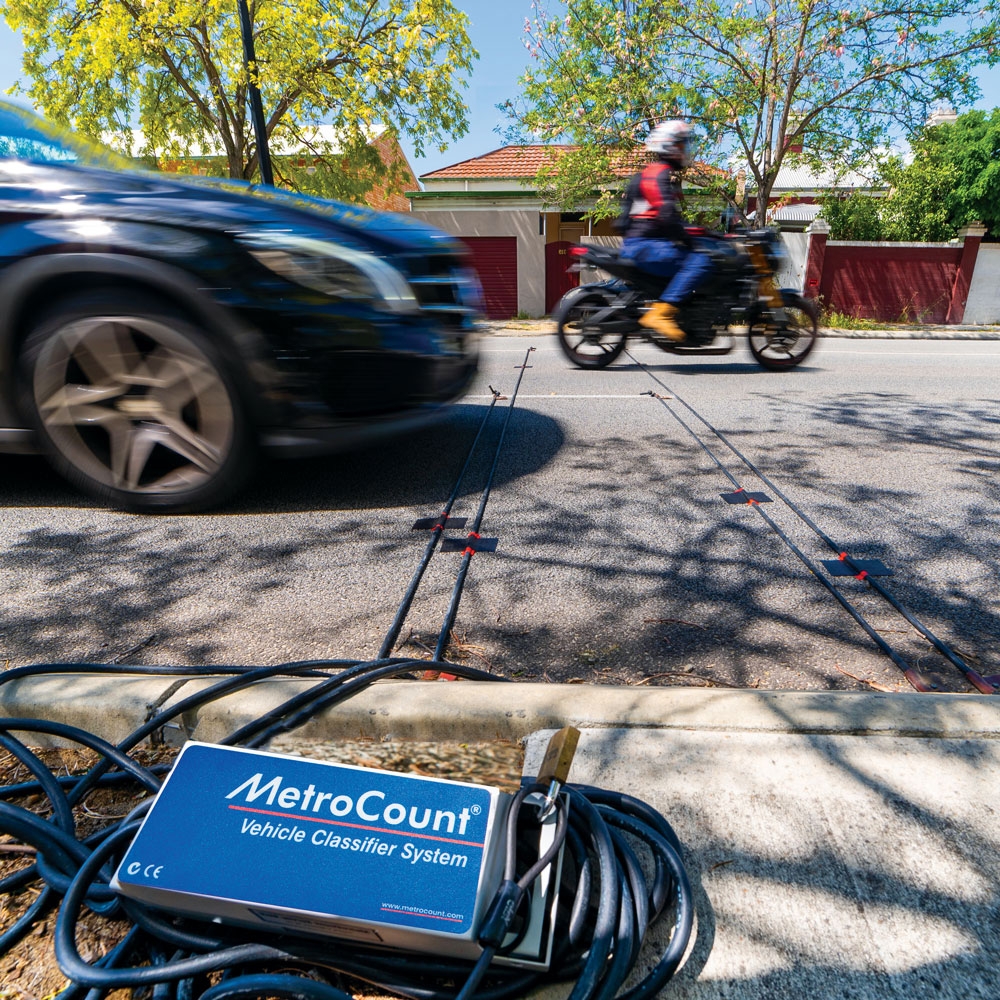Who is Matrix Traffic and Transport Data?
"Matrix is the largest traffic survey company is Australia with over 29 years of experience in traffic and transport research, data collection and information analysis.
The objective of Matrix is to provide quality research information and advice for the public, private, and business sectors."
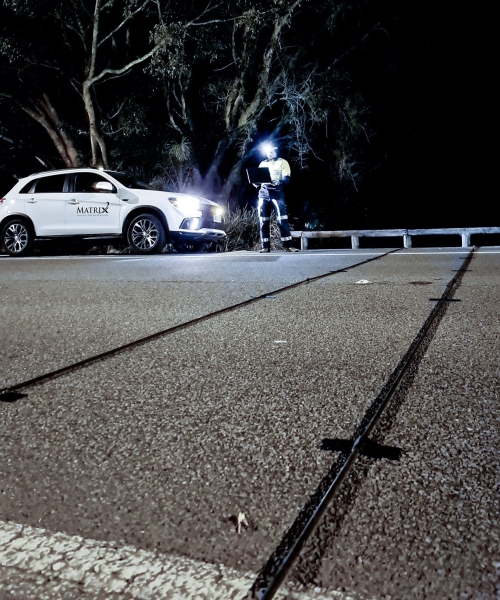
Why does Matrix use MetroCount equipment to collect data?
"We have been utilising MetroCount monitoring systems at Matrix since the company was first established. We have always found MetroCount counters/classifiers to be the most cost-effective and accurate way to conduct mid-block counts on surveys covering periods from 1 week to several years.
The systems' robustness ensures they require minimum maintenance and if installed correctly, few mid-survey checks."
Tell us why you conducted testing on the RoadPod® VT4.
“As with any new technology or methodology, we undertake field testing at Matrix to ensure the outcomes meet our requirements for data quality and data integrity. This is part of our ISO9001 certification requirements and is built into our quality standards and processes.
The key difference with the RoadPod® VT4 is the ability to monitor a centre lane, or a lane that cannot be reached with a single RoadPod® VT counter without sensors crossing another lane.
Previous methodologies involved post-processing of data to extract the centre lane information from sensors running across that lane and an adjacent lane. This is often problematic and does not always provide an accurate result.”
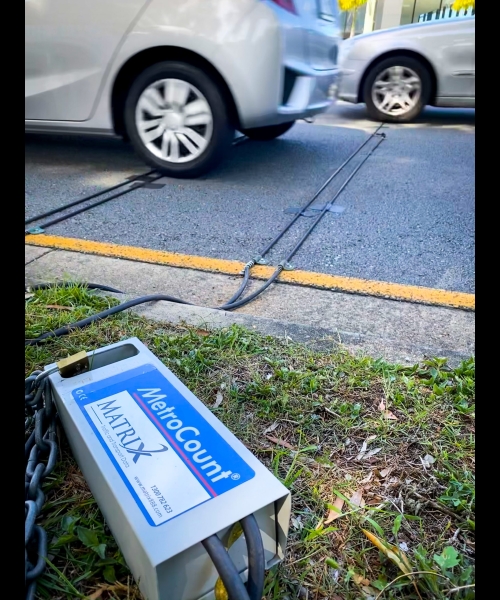
What were the parameters of the test?
“The test was set up to enable us to compare data from two adjacent lanes recorded on the RoadPod® VT4 with the same lanes also recorded separately using two RoadPod® VTs.
We set the test site up on adjoining uni-directional lanes with a centre median. This allowed for the installation of a RoadPod® VT on the median strip, collecting data from Lane 2. Lane 1 information was recorded by another RoadPod® VT placed on the kerbside.”
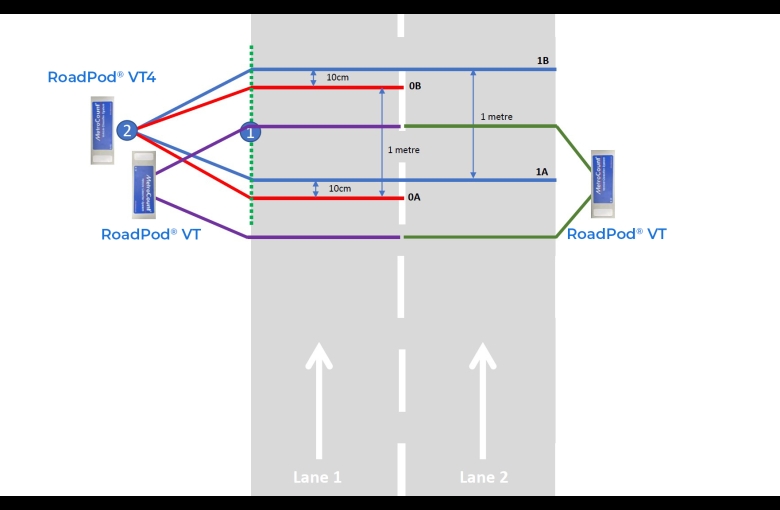
“The single RoadPod® VT4 was set up on the kerbside and recorded both lanes with four tubes. The below picture shows the tube setup. Yellow shaded tubes are the RoadPod® VT4 tubes (one short set and one long set). The blue shaded tubes captured the kerbside Lane 1 on a RoadPod® VT, and the red tubes captured the outside Lane 2 using a second RoadPod® VT.
The selection of a two-lane site was purely to enable us to monitor the second lane accurately with a RoadPod® VT and therefore enable accurate comparisons to the RoadPod® VT4 data.”
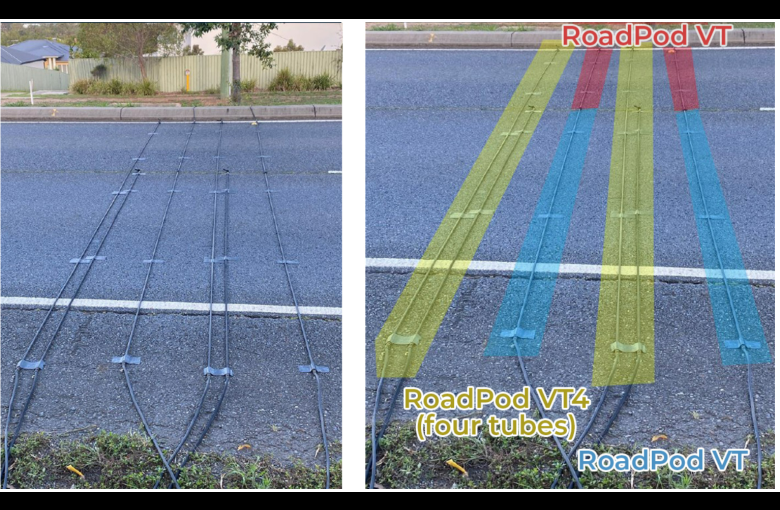
“The test site also took into account the expected classes that use that road, which usually has a fair volume of heavy articulated vehicles and B-Double trucks.
This was seen as important in confirming that the RoadPod® VT4 had no major issues in detecting and classifying these multi-axle vehicles. The traffic survey was left running for a number of days in order to gather a statistically valid sample of data.”
What were the results of the test?
Traffic Volume
"Results showed that the kerbside Lane 1 data matched almost exactly between the RoadPod® VT and the RoadPod® VT4"
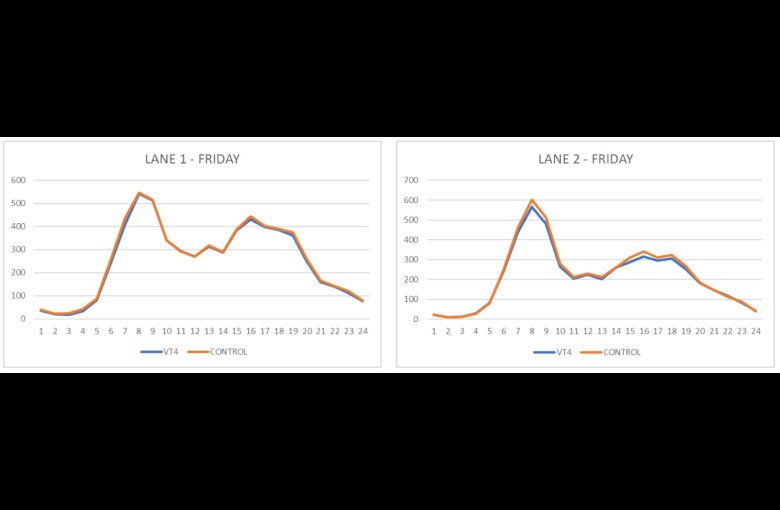
“This is unsurprising, as the VT4 short tubes are only capturing a single lane. Any variations were well within expected parameters, taking into account the road surface etc.
What was most important for us, was to determine how accurate the RoadPod® VT4 is at monitoring Lane 2. The VT4 separated out Lane 2 traffic using the long tubes and the results were, for the most part, again very close.
The only real variations noticed were during periods of peak flow, where the VT4 was around 2%-3% under the counts of the RoadPod® VT data for that lane.”
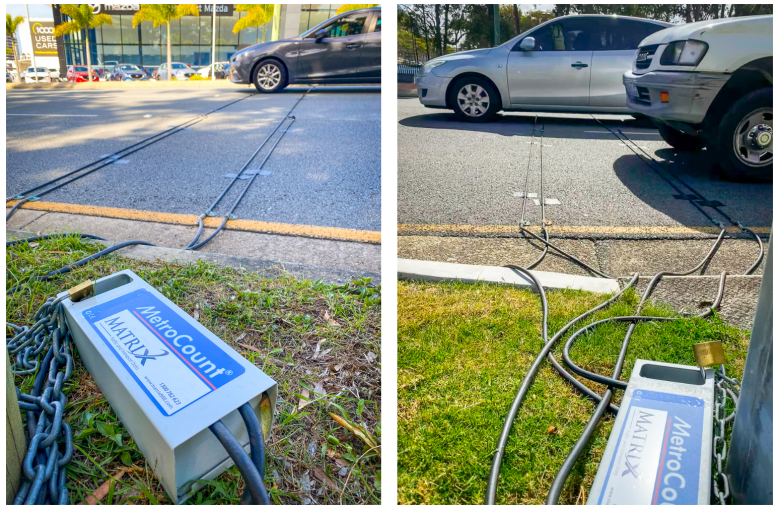
“Part of this variation could be due to vehicles changing lanes across the tubes, and others simply due to the higher volume of vehicles in both lanes.”
"Despite this, our assessment is that the VT4 is a far more accurate (and easy) methodology than using the old 'subtract Lane 1 data from combined Lanes 1 & 2 data' or the tube crossover methods."
Traffic Classification
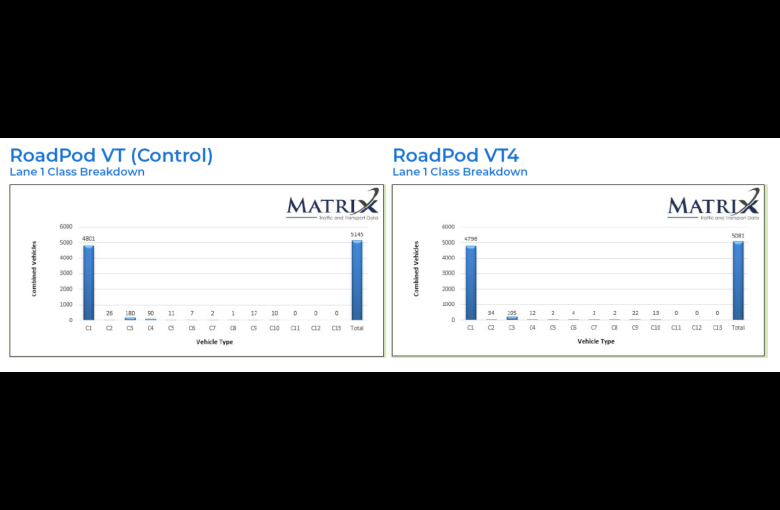
“Our comparison reports for the RoadPod® VT vs the RoadPod® VT4 data show volumes, classes and speeds from both units. Note that the variations in Class 3 volumes are not unlike any other survey, as this is the most sensitive class separation due to the length differences.”
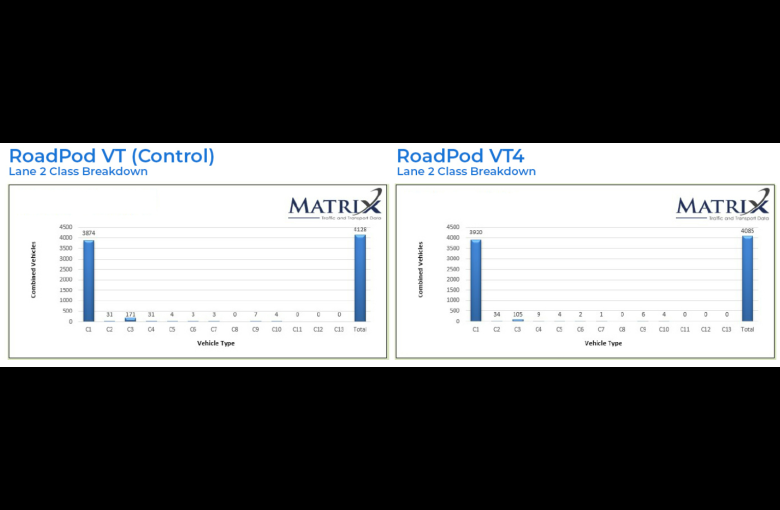
Traffic Speeds
"The speed variations are more noticeable when looking at the bar charts (particularly for the 60-70 & 70-80 bins). However, the important figures for most of our clients are the average speeds."
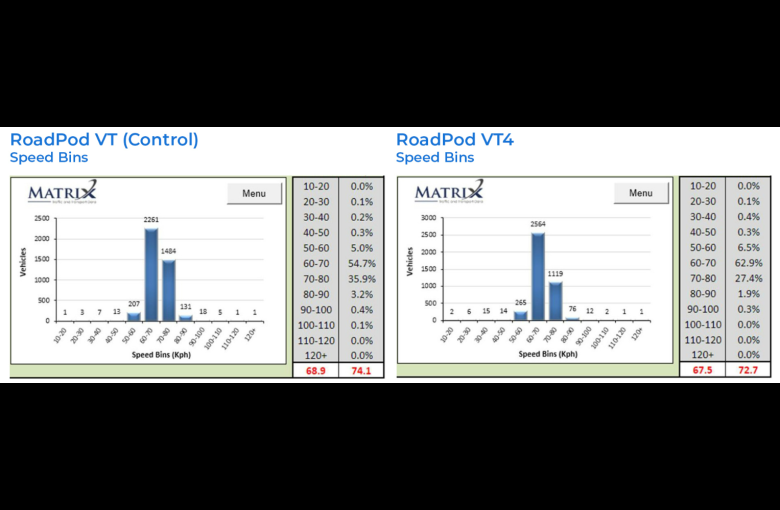
“The RoadPod® VT showed average speeds of 68.9 km/h, with 85th percentile of 74.1 km/h.
From the VT4, that average was 67.5 km/h and 85th percentile of 72.7 km/h. For both sets of figures, this represents only 2% variation – again, within acceptable parameters.”
Were you surprised by any of the results? If so, why?
"We were fairly confident that MetroCount would not be releasing a product to market that didn't do what it said on the box."
"While we did have some reservations about the level of accuracy it might produce, we now feel that the data provided, particularly for Lane 2 (the centre lane), is within acceptable parameters."
Will Matrix be using the RoadPod® VT4 in the future? If so, in what scenarios?
“Yes, we will. Based on these results, we now have 6 RoadPod® VT4s in our fleet, and these have already been deployed on live projects.
The main scenario we see as being the strong point of the VT4 is where our clients require individual .EC0 files and/or class, volume and speed information for each lane of traffic, where there is a centre lane that cannot be separately recorded using a normal RoadPod® VT setup.”
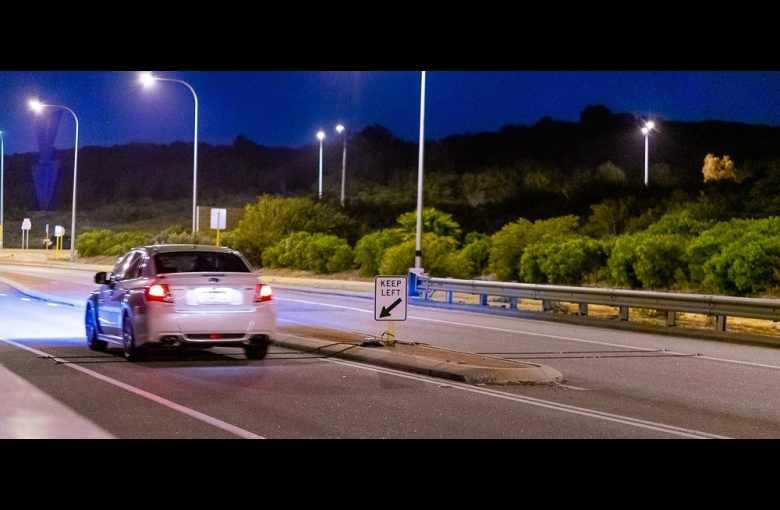
“We also see a potential application in scenarios where a single VT4 can record two bi-directional lanes of traffic that are separated by a median. This reduces the number of counters required for a job and reduces the exposure of our staff to extended time working in the centre median.”
Is there anything else you'd like to add about the tests or MetroCount in general?
"We've always been happy with the equipment and service we receive from MetroCount."
Thank you to Marty Prowse, Kevin John, Jeremy Parsons, and Giles Smith from Matrix for sharing these photos, graphs, and words. MetroCount looks forward to continuing a strong business partnership with you well into the future.
Got a great MetroCount story? Share it with us
